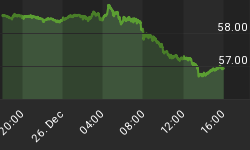Free video tutorial available to all Club EWI members
For over ten decades, the mainstream financial world has embraced the view that external news events drive trend changes in the markets. In less than ten minutes, EWI's senior tutorial instructor Wayne Gorman shatters that very idea into a fine dust, swept away into thin air.
In part one of his exclusive, three-part Club EWI video series "Why Use The Wave Principle," Wayne first assesses the pitfalls of relying on macroeconomic models to forecast; namely: "An investor is lured into the market at just the worst time, when it's time to sell, and forced out just at the best time to buy."
As for real world examples of this happening, Wayne spans three hundred years of financial history to reveal how the most pivotal economic, political, and environmental events failed to alter the course of their respective markets. Here, the free video includes groundbreaking charts on these (and more) well known episodes:
- The S&P 500 and Enron from 2000-2002: The stock market ROSE and continued to proceed upward AFTER the largest US corporate scandal and bankruptcy ever (at the time).
- The Dow Industrials and GDP quarterly data from 1970 to early 2000s: After the release of major negative GDP numbers, the market for the most part ROSE, just the opposite of what most market analysts and investors expect.
- The Dow and profound political events over the last 80 years: In the 1930s and 1940s, a series of negative incidents -- i.e. Hitler rising to power, World War II, and the Holocaust -- preceded a powerful uptrend in stocks all the way into the 1960s.
- Stock market charts of the five countries most affected by the 2004 Indian Ocean Tsunami (India, Indonesia, Malaysia, Sri Lanka, and Thailand). Four out of the five ROSE after the natural disaster...
Believe it or not, we've only scratched the surface. In his myth-busting, free video "Why Use the Wave Principle,"Wayne Gorman presents a total of 40 charts that capture failed fundamental analysis of the world's leading financial markets. Wayne recalls this expression from a famous, Nobel Prize winning economist:
"Economic reasoning will be of no value in cases of uncertainty."
And he offers this response:
"But isn't that what we have in financial markets: cases of uncertainty? We need a different type of reasoning, one that will help us to avoid the pitfalls shown on the previous charts. That's why the Wave Principle is so important. It offers a unique perspective and a market discipline of rules and guidelines that help investors avoid buying at tops and liquidating at bottoms. It helps to explain and understand trends before they happen."
The flaw in Economic 101, cause-and-effect theory is one of the easiest things to prove. But it's also one of the hardest things for many investors to accept. Now is the time to do so. Watch the free "Why Use the Wave Principle" video in its entirety today at absolutely no cost. Simply sign on to join the rapidly expanding Club EWI and take advantage of the amazing educational benefits membership has to offer.
















